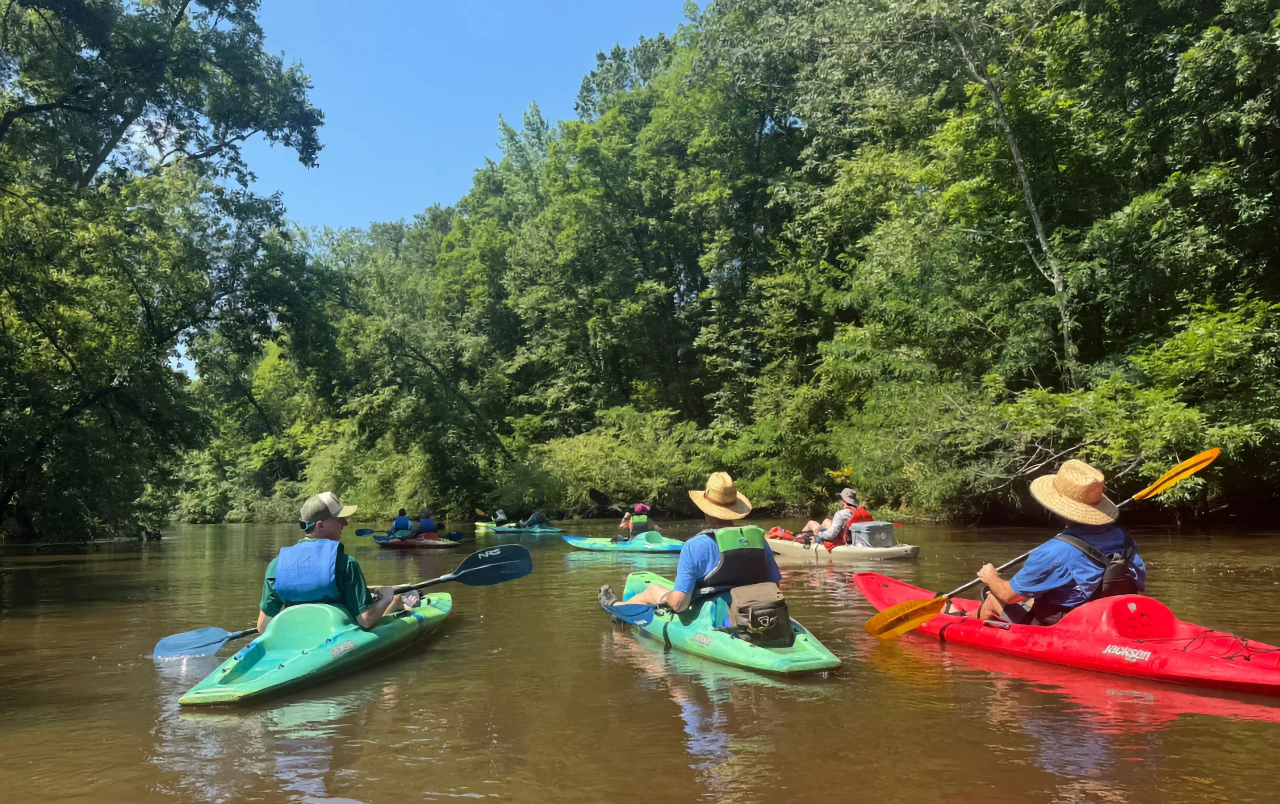The Hatchie is designated a Class I Natural River Area, the highest scenic river classification in the state. The river is also the only river in Tennessee with this designation applying to its entire length. Such recognition reflects the Hatchie’s exceptionally intact floodplain ecosystem, which serves as habitat for:
- Over 100 species of fish, including 11 species of catfish — possibly the most of any river in North America
- 50 species of mammals
- 35 species of freshwater mussels
- 250 species of birds, including critical habitat for migratory species
- numerous reptiles, amphibians and invertebrates — some of which are found nowhere else in Tennessee.
Notably, the property also supports rare species such as the Eastern slender glass lizard (Ophisaurus attenuatus longicaudus) and sits at the confluence of two important watersheds, which contain more than a dozen rare or endangered species combined.
The new management area will not only enhance ecological resilience but also expand recreation opportunities across the region. The property is adjacent to a publicly accessible boat ramp and contains over 10 miles of river and stream frontage, giving all Tennesseans and visitors additional avenues for paddling, wildlife watching, nature photography and environmental education.
The property also borders Big Hill Pond State Park and falls within the state’s Hatchie River and Big Hill Pond areas of interest for conservation. The area offers a near-pristine view of West Tennessee’s historical and ecological landscape — one that has remained largely unchanged for centuries.
This effort aligns with priorities laid out in the State Wildlife Action Plan, the Southeast Conservation Blueprint, The Nature Conservancy’s Conservation Plan, and TennGreen’s own Strategic Land Conservation Plan. The land is marked by state and national partners as highly resilient, well-connected and rich in habitat diversity — characteristics that will help species and ecosystems thrive in a changing climate.
Additionally, conserving this land contributes to protecting the Memphis Sand Aquifer, which supplies clean drinking water to over one million West Tennessee residents. With increased development pressure, sedimentation and habitat fragmentation threatening this region, strategic conservation like this is more necessary than ever.
